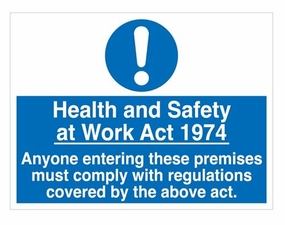Construction sites are notorious for being high-risk environments, where accidents and injuries can happen in the blink of an eye. Despite strict regulations and guidelines designed to protect workers, the reality is that health and safety issues are still prevalent in the industry. In 2019, the tragic death of a worker on a construction site in London served as a wake-up call, highlighting the deadly consequences of ignoring health and safety regulations on building sites.
The incident occurred on a site managed by construction company Balfour Beatty, which had been contracted to build a residential complex in the heart of London. One day, while working on a tower crane, a 55-year-old worker was struck by a concrete beam that fell from the crane, causing fatal injuries. An investigation by the Health and Safety Executive (HSE) found that the accident was entirely preventable, and that Balfour Beatty had failed to take the necessary precautions to ensure the safety of its workers.
As a result, Balfour Beatty was fined £3 million, one of the largest fines ever imposed on a construction company in the UK. The company was found guilty of breaching the Health and Safety at Work Act, which requires employers to ensure the health, safety, and welfare of their employees while at work. The case sent shockwaves throughout the industry, serving as a stark reminder that health and safety must be taken seriously on building sites, and that the consequences of negligence can be severe.
The tragedy that occurred on the Balfour Beatty construction site is just one example of the many risks that construction workers face on a daily basis. The industry is inherently dangerous, with hazards ranging from falls from height and electrocution to accidents involving heavy machinery and falling objects. Despite the risks, workers continue to operate in these environments, often with little more than a hard hat and a pair of steel-toed boots to protect them.
To mitigate the risks, the HSE has developed a series of regulations and guidelines that are designed to promote health and safety on construction sites. These regulations cover a range of issues, including risk assessments, personal protective equipment, and emergency procedures. However, despite the best efforts of regulators, accidents and injuries still occur far too frequently.
So, what can be done to prevent tragedies like the one that occurred on the Balfour Beatty site? The answer lies in a combination of better training, stricter enforcement of regulations, and a commitment to changing the culture of the industry. Employers must ensure that their workers are properly trained and equipped to carry out their jobs safely. This means providing adequate training on the safe operation of machinery and equipment, as well as ensuring that workers are aware of the risks involved in their work.
In addition, regulators must be vigilant in enforcing health and safety regulations, holding employers accountable when they fail to meet their obligations. This includes conducting regular inspections of construction sites to identify potential hazards and ensure that the necessary precautions are in place. Employers who fail to comply with regulations should face serious consequences, including fines and even criminal charges.
Finally, there must be a cultural shift in the industry, with a greater emphasis on prioritizing health and safety over speed and efficiency. This means changing the way that construction projects are planned and executed, with health and safety considerations being given equal weight to cost and schedule. It also means fostering a culture of safety among workers, where they are encouraged to speak up about potential hazards and are empowered to take action to mitigate risks.
The tragic incident that occurred on the Balfour Beatty construction site serves as a powerful reminder of the importance of health and safety on building sites. It is a wake-up call that should prompt employers,


